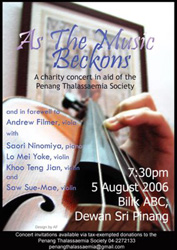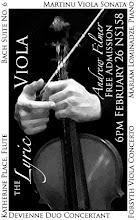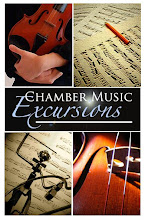The red arrows indicate how the instrument can move to the right or to the left, whilst the blue arrow indicates how it can also move upward. Each of these movements has a specific purpose, which we will get to momentarily. First we should address the reason why there is only one blue arrow - how about moving the violin downwards? In almost all cases, the movement of the instrument is related to the movement of the bow. And most of the time when players have their instrument going downwards, it is because of some instinct when the bow goes downwards:
This is a very common occurrence, but it's not very productive. If both the bow (1) and the violin (2) are moving in the same direction, you actually get less power in the contact, and the instrument ends up in a position which is less than ideal for overall posture. However, there are occasions outside of classical music where the instrument placed here is the norm - especially in some folk musics, from where the picture above was taken. In the baroque period, the violin was not even on the shoulder - but that's a story for another day. Let us now turn our attention to the opposite movement, that is, raising the instrument. A surprisingly good visual example is Debra Tiven's "Bounty":

Having the instrument in this position has certain benefits. If the bow moves downwards and the violin moves upwards it can provide a bit of an accent with minimal work, though this is usually more the case for left and right movement. The real benefit of raising the instrument is sound projection - the instrument is less padded by the shoulder, allowing the wood to have a greater amount of vibration, and more sound is produced. Sometimes the new angle of the violin can also be beneficial to spreading sound through a performance space. Of course, the downside is we can't have this position sustained for a long time, and you have to decide which sections can most benefit from raising the instrument.
This benefit is the foundation of shoulder rests. Some argue, however, that raising an instrument without any shoulder rest provides the maximum amount of projection, since there is nothing clamping the vibration of the lower part of the instrument. Most shoulder rests - anything outside of the Playonair series - are also said to make it difficult for the instrument to move left and right, which is a fair argument. So let's consider the issue of moving the instrument left and right. We discussed earlier the movement of the violin in relation to the movement of the bow. This is particularly helpful when the bow (1) moves downward while the violin (2) moves upward:
This can produce the same kind of effect of a faster bow, but with more energy balanced through both arms, making it a bit easier to play, and with more control over the bow. It thus tends to produce better results. Logically, one can do the exact opposite - during an upbow, move the instrument to the right, though this is somewhat less used consciously.
Just as with the instrument moving downwards, if the instrument follows the bow (both going left or both going right), it just eats away from one's energy without any benefits in sound.
There is an additional reason why the instrument can move to the left and right - better access to individual strings. Moving the instrument inwards (to the right) can make it easier to play on the lowest string, while moving the instrument outwards (to the left) can make it easier to play on the highest string.
At the end of the day the most important thing is to have an awareness of the ways we move with our instrument and to consider what effects it has, and what effects we want it to have, and to make sure the two arms work together to achieve that purpose.









No comments:
Post a Comment